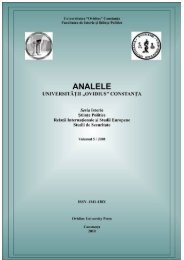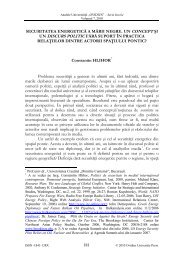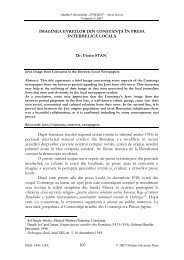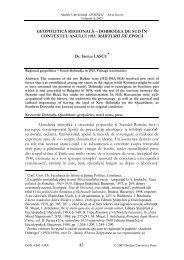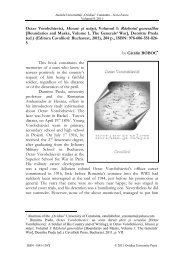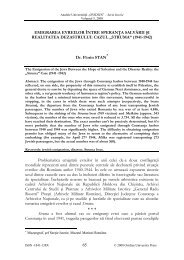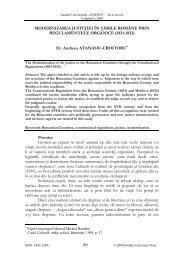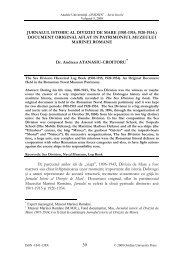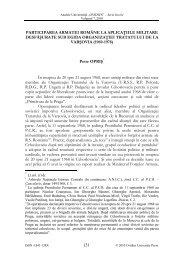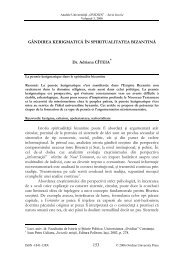analele universitÄÅ£ii âovidiusâ constanÅ£a - AUOCSI
analele universitÄÅ£ii âovidiusâ constanÅ£a - AUOCSI
analele universitÄÅ£ii âovidiusâ constanÅ£a - AUOCSI
Create successful ePaper yourself
Turn your PDF publications into a flip-book with our unique Google optimized e-Paper software.
Alexey A. Gromyko / Analele Universităţii „OVIDIUS” / Vol. 6/ 2009<br />
The world needed to become multipolar, polycentric in order to blow<br />
off academic dust of the concept of civilizations and to return it to modern<br />
politics, to contemporary social sciences. The heralds of the “end of history”<br />
had barely announced the victory of one of the polars, one "true civilization",<br />
when the attention was diverted to the idea of the “clash of civilizations”. This<br />
idea is more pragmatic and more practical, it looks to the future, not to the past.<br />
With ideologies having lost their role as true definitions of most significant<br />
identities in the world, former ideas of capitalist West, socialist East and<br />
catching-up South have been replaced with studies of what they disguised<br />
before – civilizations. The idea of the united West broke into American and<br />
European (with the latter not as homogeneous in fact either), the idea of the<br />
Third World into Latin American, African and few Asians. The Second World<br />
got similarly fragmented.<br />
Interest for this kind of categorizing rose as popularity of Euro-centric<br />
and West-centric ideas in general abated, as values (or even their equivalence)<br />
for various cultures, systems of values, histories spread, and as the concept of<br />
polycentric world settled both in discussions and real life. Despite the terms<br />
“West” and “East” (the latter referring to Asia as a whole) being still used,<br />
especially by politicians and spin doctors, they are so outdated that have lost any<br />
meaning. But the current terminology, adapted from the past and prone to<br />
splitting reality into meta-spaces, is also full of clichés. The most vivid example<br />
is the term “Europe” which is increasingly being equated with the European<br />
Union. The EU and Europe have become synonyms what would not have<br />
happened, if new-old border lines both in minds and on maps hadn’t been<br />
drawn.<br />
Cultures, values, religion, common history, space, economy have<br />
become ideology-replacing benchmarks of the biggest human communities:<br />
civilizations. By the 21 st century, civilizations have been accepted as historic<br />
realities – not just long-dead artifacts. Attempts to categorize and classify<br />
civilizations have multiplied. There are now lots of definitions of “civilization”,<br />
but most of them are not unique and mainly follow one of the best-known<br />
concepts, formulated by N.Ya. Danilevsky, L.N. Gumilev, O. Spengler, A.<br />
Toynbee and F. Braudel.<br />
The idea of civilizations, interpreted through the system of religious<br />
values, is still broadly popular despite global secularization processes (at least<br />
outside the Muslim world). One of the most popular classifications offers us to<br />
comprehend the world as a sum of Christian, Islamic, Indo-Buddhist and<br />
Confucian-Far-Eastern civilizations. Each of them, in turn, is divided into subcivilizations,<br />
like the Christian into Orthodox, Catholic, Protestant; or the<br />
Confucian into Chinese and Japanese. With all controversial nature of<br />
understanding civilizations as a religion’s habitat, it has a valuable<br />
methodological ground. Firstly, civilizations can neither be downscaled to the<br />
ISSN -1841-138X 18 © 2009 Ovidius University Press



